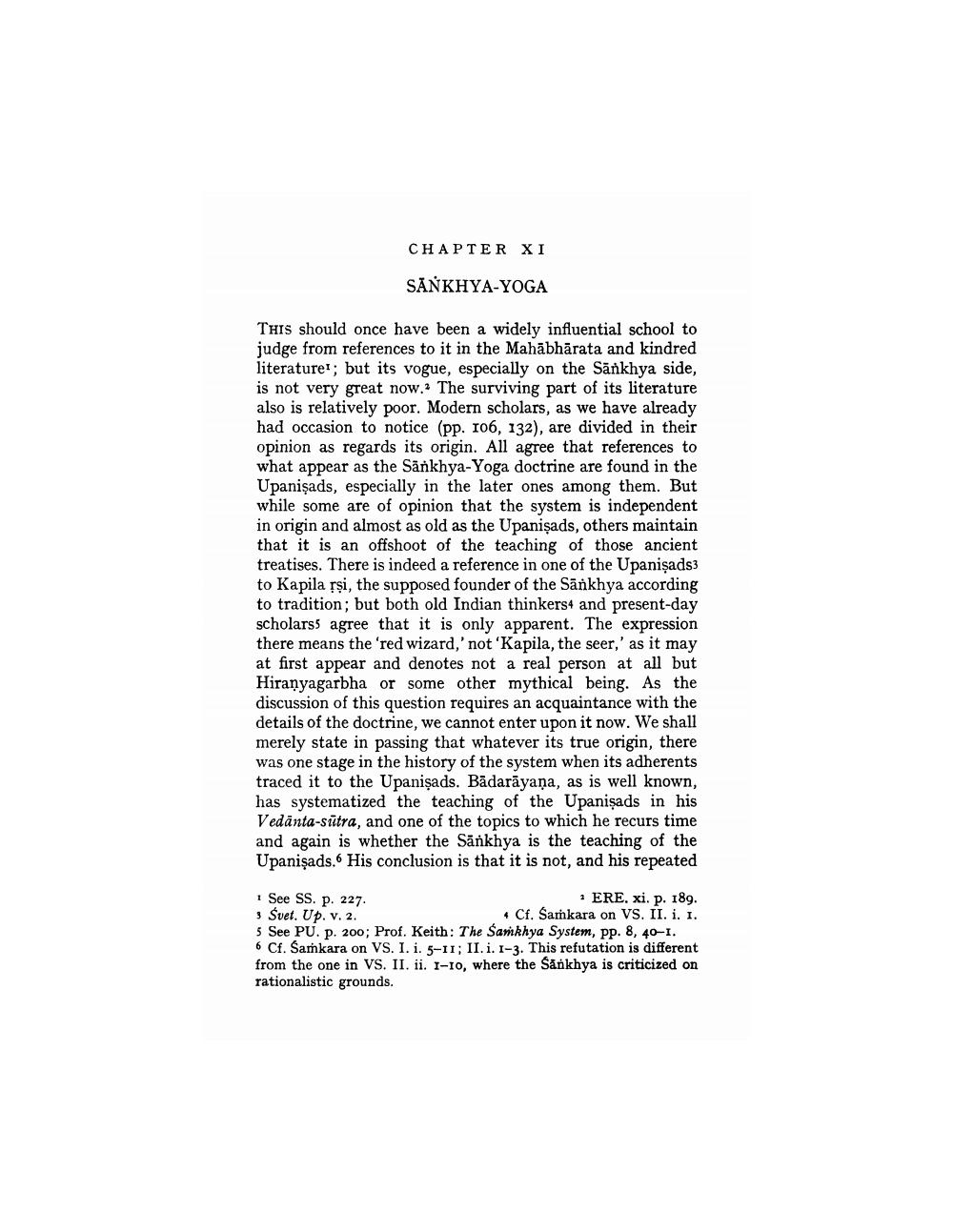________________
CHAPTER XI
SANKHYA-YOGA
This should once have been a widely influential school to judge from references to it in the Mahābhārata and kindred literaturer; but its vogue, especially on the Sankhya side, is not very great now. The surviving part of its literature also is relatively poor. Modern scholars, as we have already had occasion to notice (pp. 106, 132), are divided in their opinion as regards its origin. All agree that references to what appear as the Sankhya-Yoga doctrine are found in the Upanişads, especially in the later ones among them. But while some are of opinion that the system is independent in origin and almost as old as the Upanişads, others maintain that it is an offshoot of the teaching of those ancient treatises. There is indeed a reference in one of the Upanişads3 to Kapila rşi, the supposed founder of the Sankhya according to tradition, but both old Indian thinkers4 and present-day scholars5 agree that it is only apparent. The expression there means the 'red wizard.' not 'Kapila, the seer,' as it may at first appear and denotes not a real person at all but Hiranyagarbha or some other mythical being. As the discussion of this question requires an acquaintance with the details of the doctrine, we cannot enter upon it now. We shall merely state in passing that whatever its true origin, there was one stage in the history of the system when its adherents traced it to the Upanisads. Bādarāyaṇa, as is well known, has systematized the teaching of the Upanisads in his Vedānta-sutra, and one of the topics to which he recurs time and again is whether the Sankhya is the teaching of the Upanişads. His conclusion is that it is not, and his repeated
1 See SS. p. 227.
1 ERE. xi. p. 189. 3 Svet. Up. v. 2.
Cf. Samkara on VS. II. i. 1. 5 See PU. P. 200; Prof. Keith: The Samkhya System, pp. 8, 40-I. 6 Cf. Samkara on VS. 1. i. 5-11; II. i. 1-3. This refutation is different from the one in VS. II. ii. 1-10, where the Sankhya is criticized on rationalistic grounds.




